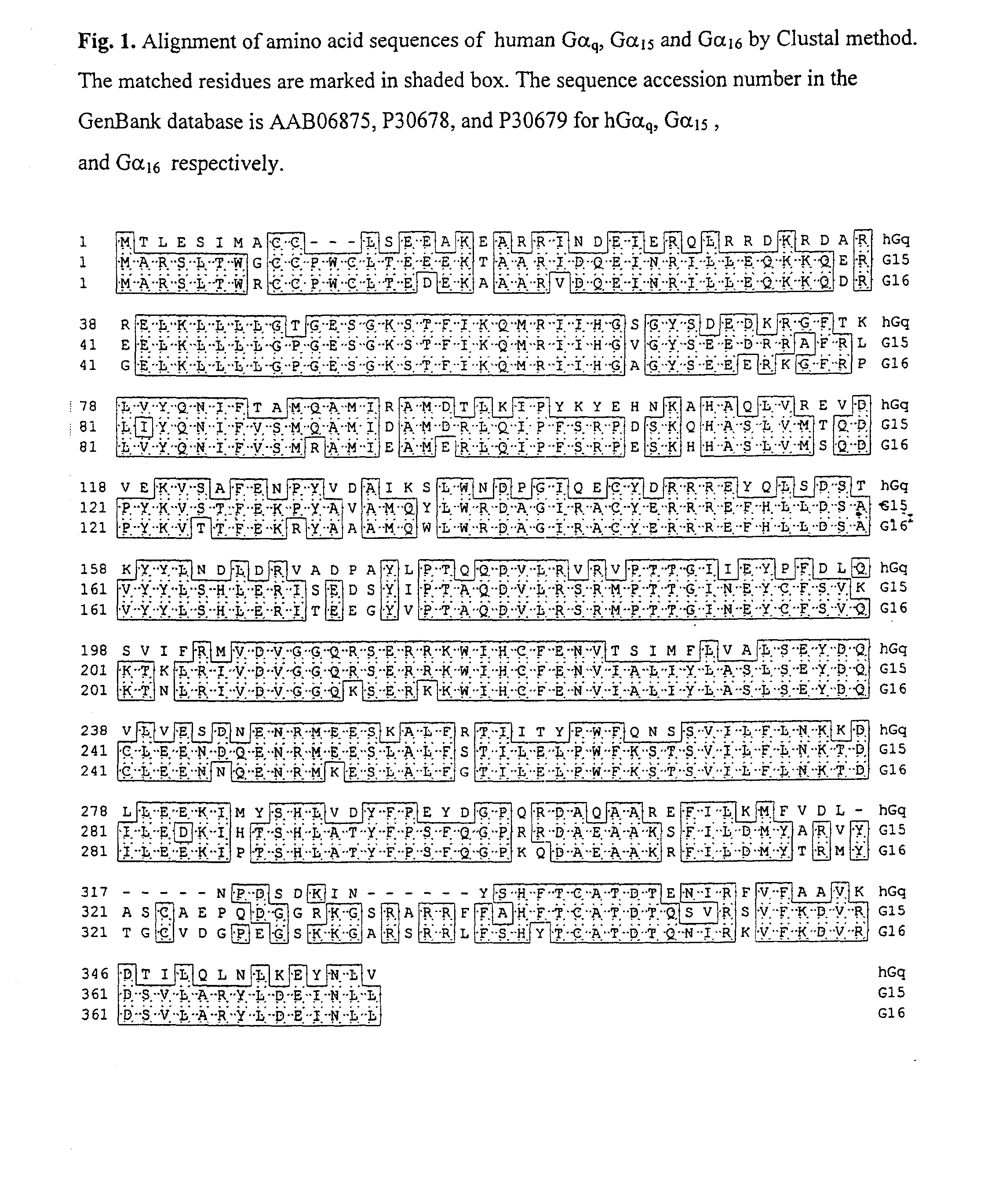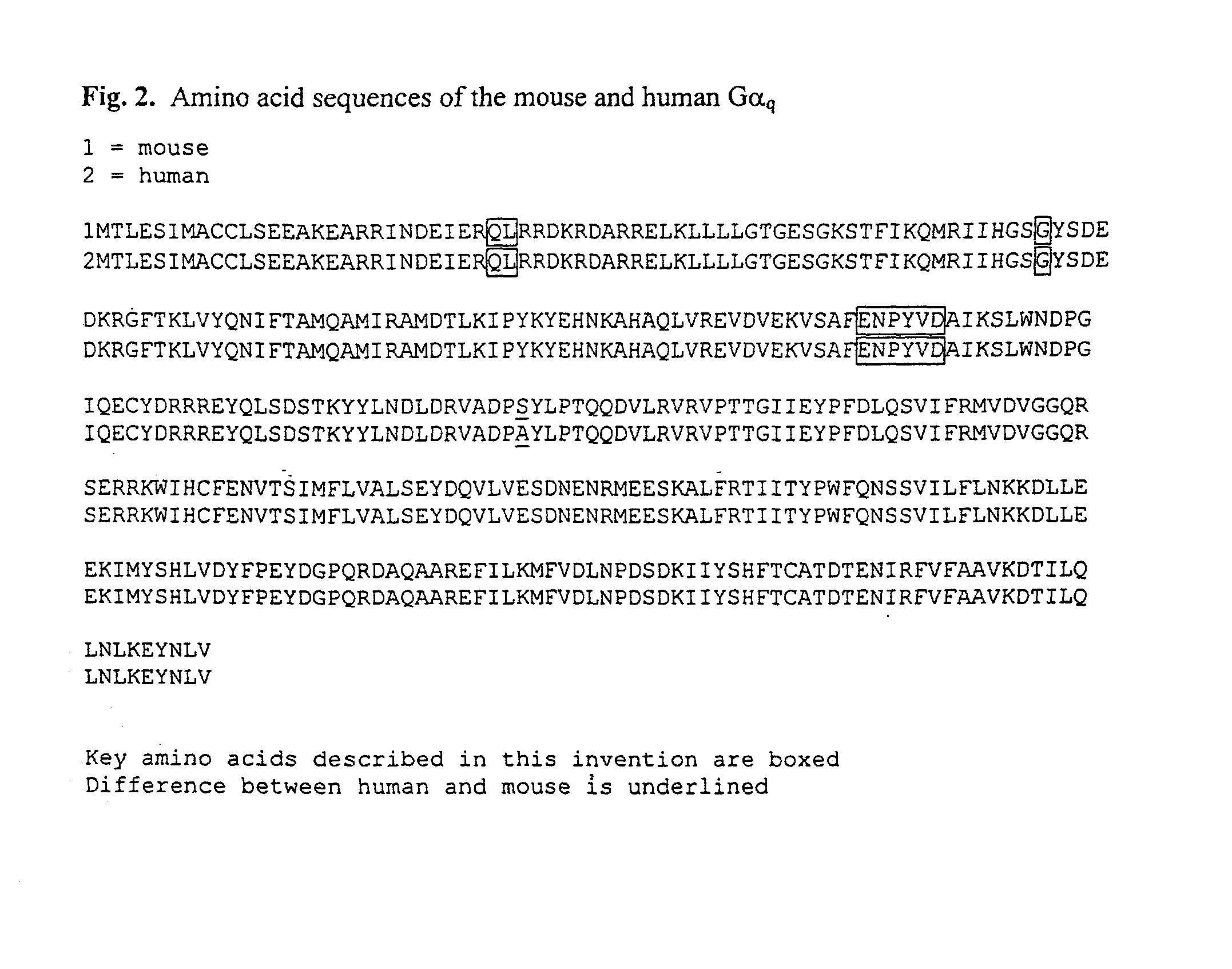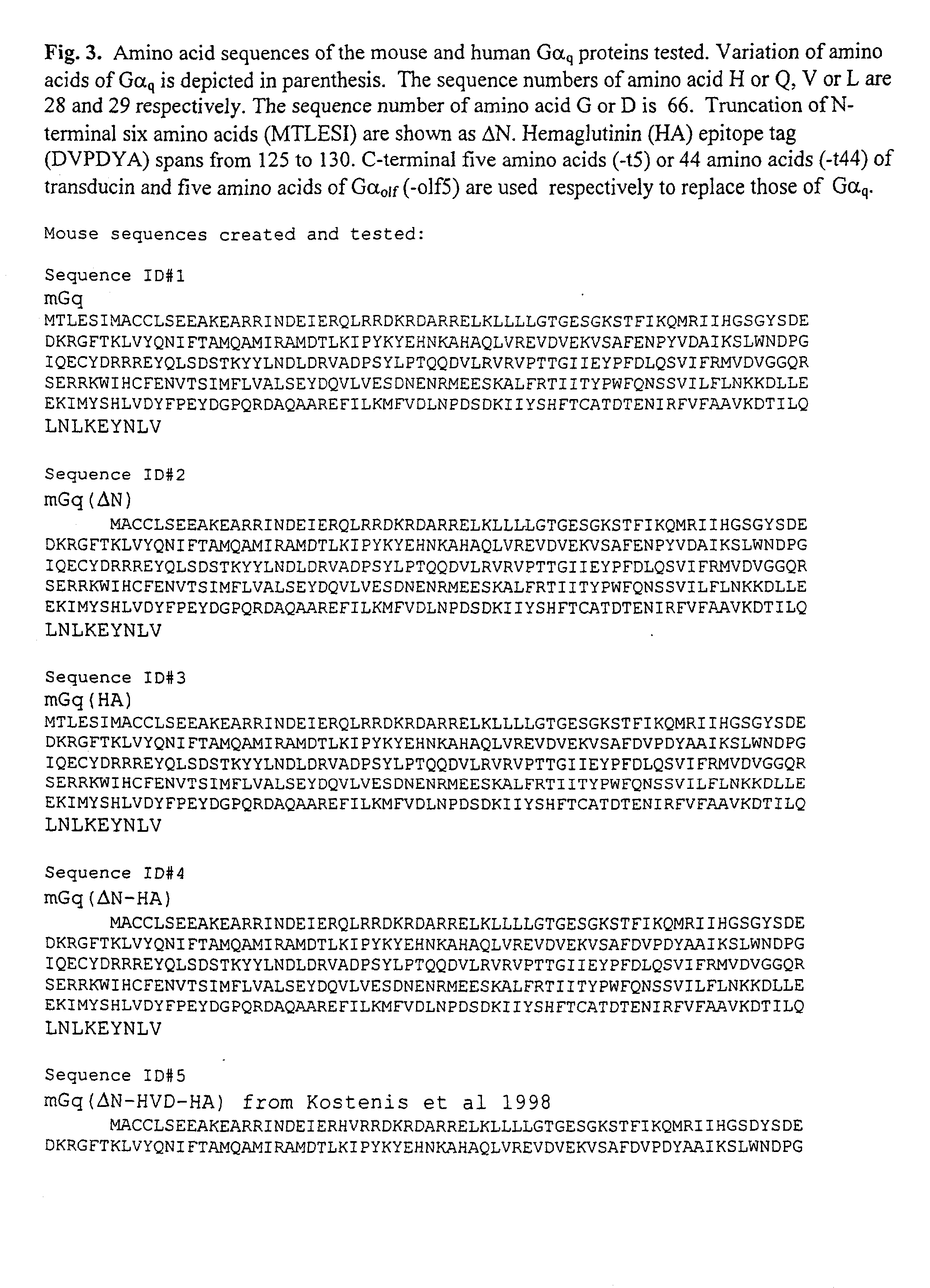Gaq protein variants and their use in the analysis and discovery of agonists and antagonists of chemosensory receptors
a technology of chemosensory receptors and protein variants, which is applied in the field of gaq protein variants and their use in the analysis and discovery of agonists and antagonists of chemosensory receptors, to achieve the effect of improving the functional coupling to tas
- Summary
- Abstract
- Description
- Claims
- Application Information
AI Technical Summary
Benefits of technology
Problems solved by technology
Method used
Image
Examples
Embodiment Construction
[0037] Initially, the G.alpha..sub.q variant protein termed mG.sub.q (ON-HVD-HA) of Seq ID#5, described in Kostenis et al. (1998), was shown to functionally couple to taste receptor mT2R5 and olfactory OR 17. Previously, it had not been known whether this protein would allow functional expression of chemosensory receptors such as taste and olfactory receptors. The response using the Kostenis et al G protein was weak. Therefore, in order to improve functional coupling a series of variants was created. The variants were chimeras between the variants of the Kostenis G protein which contained the C terminal sequences from G.alpha..sub.olf or transducin. Variants containing the C-terminal changes exhibited improved function. The use of C-terminal replacements in G proteins had previously been reported by Conklin (Conklin et al., 1993; Conklin et al., 1996; Coward et al., 1999) but the sequences from G.alpha..sub.olf or transducin had not previously been shown to function with taste or ol...
PUM
| Property | Measurement | Unit |
|---|---|---|
| Aspartic acid change | aaaaa | aaaaa |
| nucleic acid sequence | aaaaa | aaaaa |
| nucleic acid | aaaaa | aaaaa |
Abstract
Description
Claims
Application Information
 Login to View More
Login to View More - R&D
- Intellectual Property
- Life Sciences
- Materials
- Tech Scout
- Unparalleled Data Quality
- Higher Quality Content
- 60% Fewer Hallucinations
Browse by: Latest US Patents, China's latest patents, Technical Efficacy Thesaurus, Application Domain, Technology Topic, Popular Technical Reports.
© 2025 PatSnap. All rights reserved.Legal|Privacy policy|Modern Slavery Act Transparency Statement|Sitemap|About US| Contact US: help@patsnap.com



